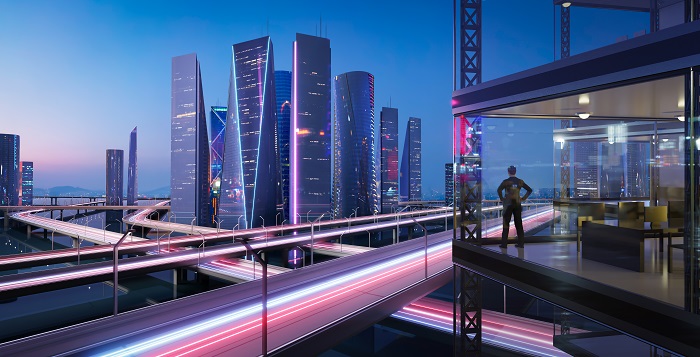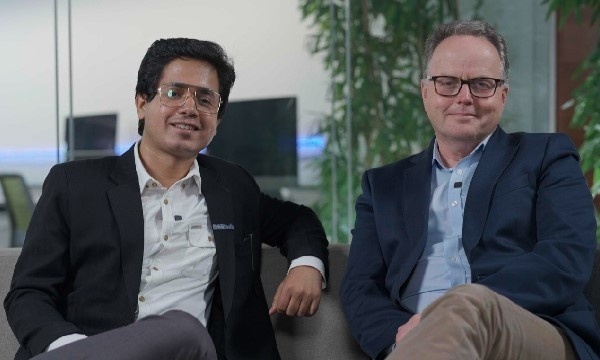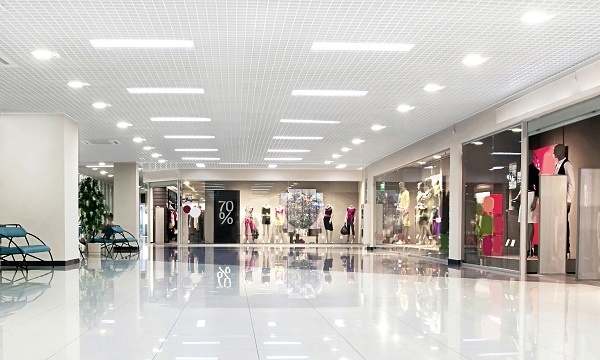New-age technologies are transforming the world into a better place, including helping curb crime rates worldwide.
From predictive analytics to Internet of Things (IoT), artificial intelligence (AI)-enabled surveillance cameras to drones and biometrics to facial recognition, the list of innovations tackling crime is extensive. This is accelerating the development of unique solutions for people’s safety and better governance in smart cities.
Smart cities are technologically advanced urban areas connected by smart devices and sensors that collect a range of data. This data, propped up by next-gen technologies like AI, is used to improve and manage various functions within a city, such as waste management and crime prevention.
The safe smart city
Traditionally, law enforcement agencies across the world have been strong adopters of these powerful technologies.
Since April 2019, the Single Online Home (SOH) platform—a ‘digital police station’ that supports victims in reporting crime incidents—has been helping modern-day policing. It is available across all police forces in the United Kingdom.
The Greater Manchester Police (GMP) has now sought to upgrade this system ever further. Software—developed by HCLTech—will now read reports made on the SOH platform and automatically feed data in the GMP command-and-control system. It ensures 150 more police officers are available each month to attend crime scenes and respond to victim’s queries.
In addition to integrating all these technologies to help tackle crime, governments are now able to create virtual replicas of cities in the form of a digital twin to help create better governance.
Mexico City, for example, has deployed technology solutions to improve safety standards in various cities, while reducing crime. In 2020, according to the Crime Index by Numbeo, the country was ranked as the 34th most dangerous country in the world when it came to safety and crime. By mid-2023, its place has dropped by six places as the country became safer.
How did this improvement take place?
One of the most populous cities in Latin America, Mexico City was struggling with high crime rates (644 homicides) in 2020. The government aimed to turn this around by adopting a ‘smart city’ model, supported by robust AI-enabled surveillance capabilities and an integrated IoT ecosystem.
This initiative was deployed to ensure an enhanced focus on public convenience and safety, while enabling a technology infrastructure capable of supporting state-of-the-art edge transformation.
How did HCLTech help?
With a presence of nearly 15 years in this LATAM city, HCLTech as a trusted partner, deployed Nucleus, a solution that provided end-to-end network services orchestration, including design, deployment and management. This brought together the entire IoT-enabled connected ecosystem into one network, which is capable of catering to the entire spectrum of connected devices.
The deployment of this solution involved:
- Implementing a network backbone based on Aruba’s next-gen access points, routing and switching equipment
- The scale included extremely dense network infrastructure with Wi-Fi-6 capabilities, consisting of more than 23,000 access points, more than 2,000 switches and routers
- The ‘edge’ included setting up small data rooms at over 100 police stations, equipped with low latency switching infrastructure, to cater to an extremely high volume of traffic for image processing and analytics
- Enabling a connected IoT ecosystem supported with voice sensors for easy collaboration between different government entities, which is critical for better crime solving through real-time data analytics and alert mechanisms
- The connected ecosystem also involved smart AI cameras and AI mics enabled with digital edge capabilities and powered by Intel’s advanced edge compute platform
HCLTech also introduced a scalable and reusable model considered for further opportunities in other geographies.
What’s next?
According to the World Bank, nearly 80% of the world’s GDP is generated in cities. Today, cities are home to approximately 57% of the world’s population and despite a trend of citizens moving away from large conurbations during COVID, this figure is projected to increase to nearly 70% by 2050. These cities account for nearly 70% of the world’s energy consumption, as well as greenhouse gas emissions.
With the rapid scale of urbanization coupled with continuous investments by businesses and governments driving a massive population influx, people increasingly expect their cities to be safe, habitable, sustainable and convenient. This is why governments and authorities are opting for smart cities.
While challenges such as overburdened public infrastructure, increasing pollution, traffic congestions and rising crime can dent a city’s plans to excel, a smart city model addresses all these areas with the right technologies in place and creating an interconnected sustainable ecosystem.
As AI enters the world of IoT—creating a multiverse of Artificial Intelligence of Things (AIoT)—the devices used in a smart city become more capable of learning from user interactions, service providers and other devices which are part of the interconnected sustainable ecosystem. This is backed by high-speed internet connectivity, 5G, and data in the cloud, which is supported by Wi-Fi-6.
With scores of advantages like refining automation of manual work, understanding and predicting the vast range of risks, automating a prompt response, developing new products or services while enhancing the existing ones, helping to increase IoT scalability and reduce or eliminate unplanned downtime, this hybrid technology—AIoT—is an important asset in building a smart city.
It provides real-time analytics, leverages application analytics, gives output and deeper insights in collaboration with machine learning, natural language e-processing and computer vision with access to each possible dataset.
How HCLTech is helping to create safer cities?
Built by HCLTech IoTWoRKS™ using Intel technologies, the Intelligent Secure Edge (ISE) for Smart Cities is a collaborative platform to drive proactive responses powered by real-time insights. It combines AI processing on the edge and Wi-Fi 6 mesh network connectivity that brings together citizens, authorities and public institutions and businesses on a virtual network.
With multiple use cases—like traffic management and response systems, safety on educational campuses, governments and legislative facilities, events, conferences and stadiums, correctional facilities, smart parking at large venues, city lights operations and maintenance, transportation hubs, customs and border protection, eater quality and flood control—under its belt, HCLTech is transforming cities and businesses with these connected solutions.





